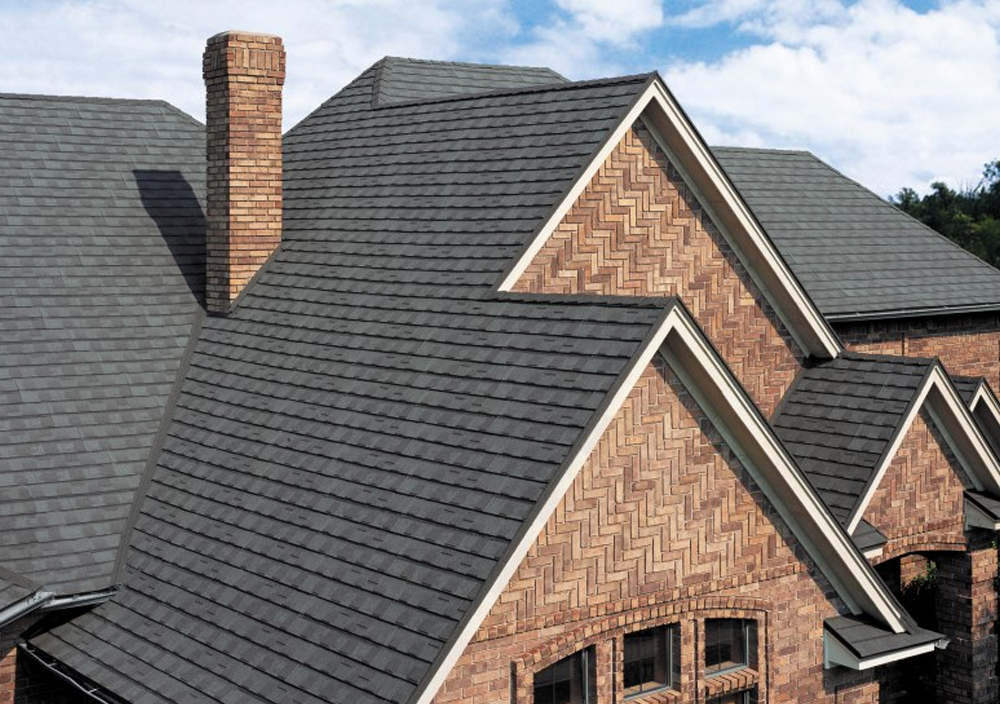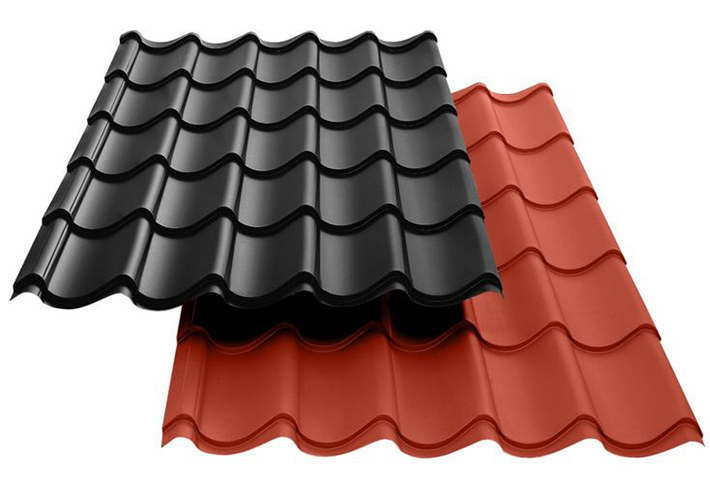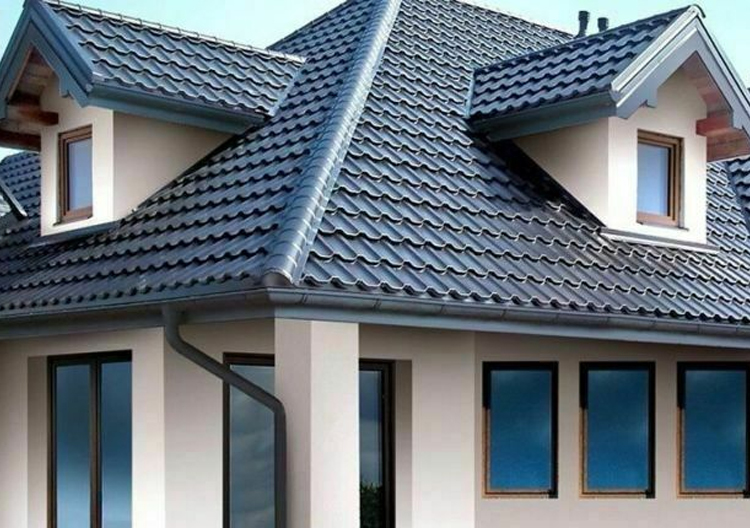Stone-coated roof tiles are widely used in both residential and commercial buildings due to their durability, aesthetic appeal, and weather resistance. Here’s a breakdown of their dimensions and applications:

Dimensions of Stone-Coated Roof Tiles
- Overall Length and Width:
- Length: Stone-coated roof tiles usually range from 1,300 mm to 1,400 mm (approximately 51 to 55 inches). The longer length contributes to fewer overlaps, reducing installation time and cost.
- Width: The typical width of these tiles is around 420 mm (about 16.5 inches). This width allows for sufficient coverage while maintaining a lightweight structure.
- Effective Coverage Area:
- Coverage Per Tile: Each tile typically covers between 0.45 and 0.5 square meters (about 4.8 to 5.4 square feet). The exact coverage can vary based on the tile’s profile and the manufacturer’s design.
- Overlap: The effective coverage takes into account the necessary overlaps between tiles to ensure a watertight seal, which is critical for preventing leaks.
- Thickness:
- Steel Core: The core material, typically made of galvanized steel, ranges from 0.4 mm to 0.5 mm in thickness. This provides the necessary strength while keeping the tiles lightweight.
- Coating Layers: The thickness of the tile may also include additional layers, such as a stone coating, adhesive layers, and a protective top coat. These layers add to the tile’s overall thickness but are usually thin enough to maintain a lightweight profile.
- Weight:
- Per Tile: A single tile usually weighs between 2.5 kg to 3.0 kg (about 5.5 to 6.6 pounds). This lightweight characteristic allows for easier handling and installation, reducing labor costs.
- Per Square Meter: The overall weight per square meter is typically around 6 to 7 kg (approximately 13 to 15.4 pounds). This is significantly lighter than traditional roofing materials like clay tiles or slate, which helps in reducing the load on the roof structure.
Profile Variations and Their Applications

- Classic or Shake Profile:
- Design: Imitates the appearance of traditional wood shake shingles with a rugged, textured look.
- Applications: Ideal for residential homes, particularly in rustic or traditional architectural styles. Provides a natural appearance while offering modern durability.
- Shingle Profile:
- Design: Mimics the flat, smooth look of asphalt shingles but with the added benefits of stone coating and steel.
- Applications: Commonly used in both residential and commercial settings, where a sleek, contemporary look is desired.
- Roman Profile:
- Design: Features a curved, wave-like shape that resembles traditional Roman or Mediterranean clay tiles.
- Applications: Often chosen for luxury homes, resorts, and buildings with Mediterranean or Spanish-style architecture, providing an elegant and timeless look.
- Barrel Tile Profile:
- Design: Replicates the rounded, barrel-shaped tiles typical of Spanish and Mediterranean roofs.
- Applications: Suitable for high-end residential and commercial properties, as well as historical restorations, where a classic and traditional appearance is essential.
Advanced Features and Benefits
- Weather Resistance:
- Wind Resistance: Stone-coated roof tiles can withstand high winds, often up to 120 mph (about 193 km/h), making them suitable for hurricane-prone areas.
- Hail Resistance: The tough, stone-coated surface can resist damage from hailstones, typically up to 2.5 inches in diameter.
- Fire Resistance: These tiles are non-combustible, making them a safer option in areas prone to wildfires.
- Aesthetic Flexibility:
- Color Options: Available in a wide range of colors, from earthy tones like terra cotta and burnt sienna to modern shades like charcoal and slate gray. This allows for customization to match any architectural style.
- Custom Patterns: Some manufacturers offer custom patterns and designs, enabling the tiles to mimic other materials like slate or wood.
- Sustainability and Energy Efficiency:
- Reflective Properties: The stone coating reflects sunlight, reducing heat absorption and lowering cooling costs in warm climates.
- Eco-Friendly Materials: Many stone-coated tiles are made from recycled materials and are fully recyclable at the end of their lifespan, making them an environmentally responsible choice.
- Longevity and Low Maintenance:
- Lifespan: With proper installation and maintenance, stone-coated roof tiles can last 50 years or more, outlasting many other roofing materials.
- Maintenance: They require minimal maintenance, often limited to occasional cleaning to remove debris and maintain their appearance.
Applications in Specific Building Types

- Urban Residential Homes:
- Benefits: Offers a stylish and durable roofing solution that complements modern and traditional home designs alike. Their lightweight nature is particularly beneficial for homes with less robust roof structures.
- Commercial Buildings:
- Retail Stores: Stone-coated tiles enhance the visual appeal of retail establishments, attracting customers while providing long-term durability.
- Office Buildings: The tiles’ ability to reflect heat can contribute to a more energy-efficient building, reducing cooling costs and enhancing indoor comfort.
- Educational Institutions:
- Schools and Universities: Provides a robust and long-lasting roofing solution that minimizes maintenance costs and disruptions, essential for educational environments.
- Cultural and Religious Buildings:
- Churches, Temples, and Mosques: The classic and elegant profiles of stone-coated tiles can complement the architectural beauty of religious structures, ensuring that they remain aesthetically pleasing and structurally sound for decades.
Installation Considerations
- Roof Pitch Compatibility:
- Stone-coated roof tiles are versatile and can be installed on roofs with pitches as low as 3:12 (14°) to steep pitches exceeding 12:12 (45°). This flexibility makes them suitable for a wide range of architectural designs.
- Underlayment Requirements:
- A high-quality underlayment is essential to ensure waterproofing and protection against moisture penetration. The underlayment also contributes to the overall longevity of the roof.
- Fastening Systems:
- Stone-coated tiles are usually fastened with corrosion-resistant screws or nails, providing strong resistance to wind uplift. The fastening system is crucial in areas prone to strong winds or seismic activity.
- Ventilation:
- Proper ventilation is necessary to prevent heat buildup under the roof, which can affect the roof’s performance and the building’s energy efficiency. Ridge vents, soffit vents, and other ventilation systems can be incorporated into the roof design.
Final Considerations

Stone-coated roof tiles offer a combination of aesthetic appeal, durability, and low maintenance, making them a preferred choice for a wide range of applications. Their ability to mimic traditional roofing materials while providing modern benefits ensures they are both a practical and visually appealing solution for any building type.





